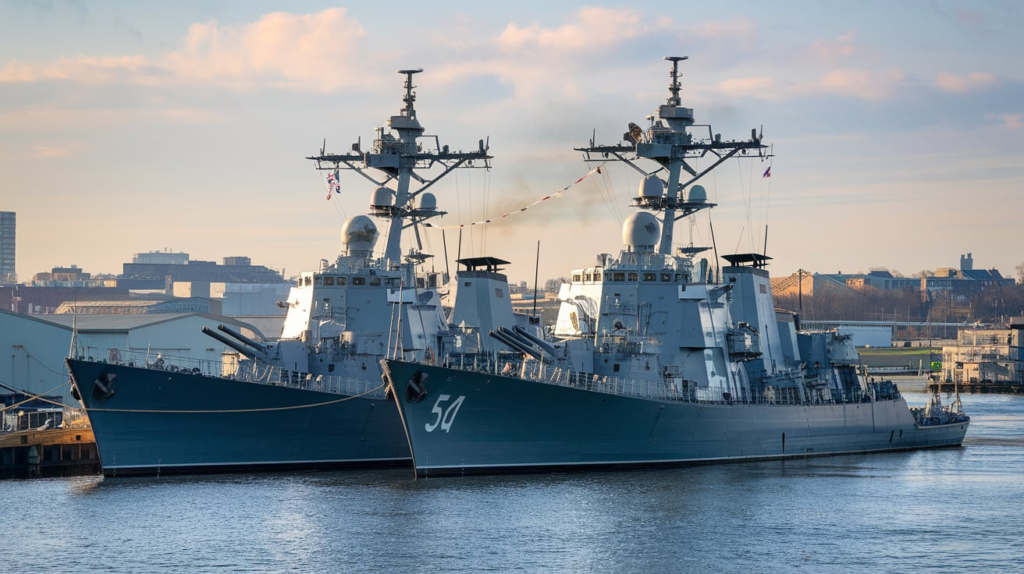Introduction
The Hawthorn M-class MentorMansfield destroyers hold a significant place in naval history. Built during the early 20th century, these ships were part of the Royal Navy’s efforts to enhance their fleet during World War I. The Hawthorn M-class MentorMansfield destroyers were known for their speed, firepower, and unique design, making them a formidable force on the seas.
Design and Construction
The Hawthorn M-class MentorMansfield destroyers were constructed by Hawthorn Leslie and Company, a renowned shipbuilding firm based in Hebburn on Tyne. These ships were part of the 1913-14 Programme, aimed at bolstering the Royal Navy’s capabilities in anticipation of the looming conflict. The Hawthorn M-class MentorMansfield destroyers were similar to the Admiralty M-class but featured a modified design that set them apart.
One of the most distinctive features of the Hawthorn M-class MentorMansfield destroyers was their four-funnel configuration. This design choice was unique to these ships and distinguished them from other destroyers of the time, which typically had three funnels. The Hawthorn M-class MentorMansfield destroyers were the last four-funnelled destroyers built for the Royal Navy, apart from the Leaders.
Specifications
The Hawthorn M-class MentorMansfield destroyers had impressive specifications that contributed to their effectiveness in combat. They displaced 1,057 long tons and measured 271 feet 6 inches. The beam was 27 feet 6 inches, and the draught was 10 feet 6 inches. These dimensions allowed the Hawthorn M-class MentorMansfield destroyers to navigate maritime environments quickly.
The Hawthorn M-class MentorMansfield destroyers could achieve up to 35 knots, powered by Yarrow-type boilers and Parsons I.R. steam turbines. This speed was crucial for their role in patrolling and engaging enemy vessels. The ships were armed with three QF 4-inch Mark IV guns, a single QF 2-pounder “pom-pom” Mk.II, and two twin 21-inch torpedo tubes. This armament made the Hawthorn M-class MentorMansfield destroyers formidable in naval battles.
Service History
The Hawthorn M-class MentorMansfield destroyers served with distinction during World War I. HMS Mentor and HMS Mansfield were the two ships in this class, and both played vital roles in various naval operations. HMS Mentor was launched on August 21, 1914, and completed in January 1915. HMS Mansfield was launched on December 3, 1914, and completed in April 1915.
HMS Mentor was part of the Harwich Force, which operated in the North Sea. This force protected the British coast and engaged German naval forces. The Hawthorn M-class MentorMansfield destroyers were involved in several key battles, including the Battle of Dogger Bank. Their speed and firepower made them valuable assets in these engagements.
HMS Mansfield also had a notable service history. Like HMS Mentor, it was involved in various operations in the North Sea and the English Channel. The Hawthorn M-class MentorMansfield destroyers were instrumental in maintaining control over these crucial maritime areas. Both ships survived the war and were sold for scrap in the early 1920s.
Legacy
The legacy of the Hawthorn M-class MentorMansfield destroyers is one of innovation and excellence. These ships represented a significant advancement in naval engineering and design. Their unique four-funnel configuration and powerful armament set them apart from other destroyers of their time.
Technological Innovations of the Hawthorn M-class MentorMansfield Destroyers
The Hawthorn M-class MentorMansfield destroyers were at the forefront of technological innovation during their time. One of the most notable advancements was their propulsion system. Equipped with Yarrow-type boilers and Parsons I.R. steam turbines, these ships could reach impressive speeds of up to 35 knots.
This speed was crucial for their role in patrolling and engaging enemy vessels and demonstrated the era’s cutting-edge engineering. Additionally, the Hawthorn M-class MentorMansfield destroyers featured advanced weaponry, including QF 4-inch Mark IV guns and twin 21-inch torpedo tubes, which provided them with formidable firepower. These technological innovations made the Hawthorn M-class MentorMansfield destroyers leap forward in naval warfare capabilities.
The Hawthorn M-class MentorMansfield destroyers also demonstrated the importance of speed and maneuverability in naval warfare. Their ability to quickly engage and disengage from enemy forces made them invaluable assets to the Royal Navy. The lessons learned from the design and operation of the Hawthorn M-class MentorMansfield destroyers influenced future naval shipbuilding efforts.
Conclusion
In conclusion, the Hawthorn M-class MentorMansfield destroyers were remarkable ships that played a crucial role during World War I. Their unique design, impressive specifications, and distinguished service history make them essential to naval history. The Hawthorn M-class MentorMansfield destroyers exemplify the innovation and excellence that characterized the Royal Navy’s efforts during this period.

